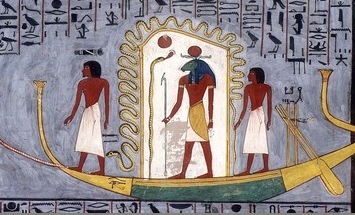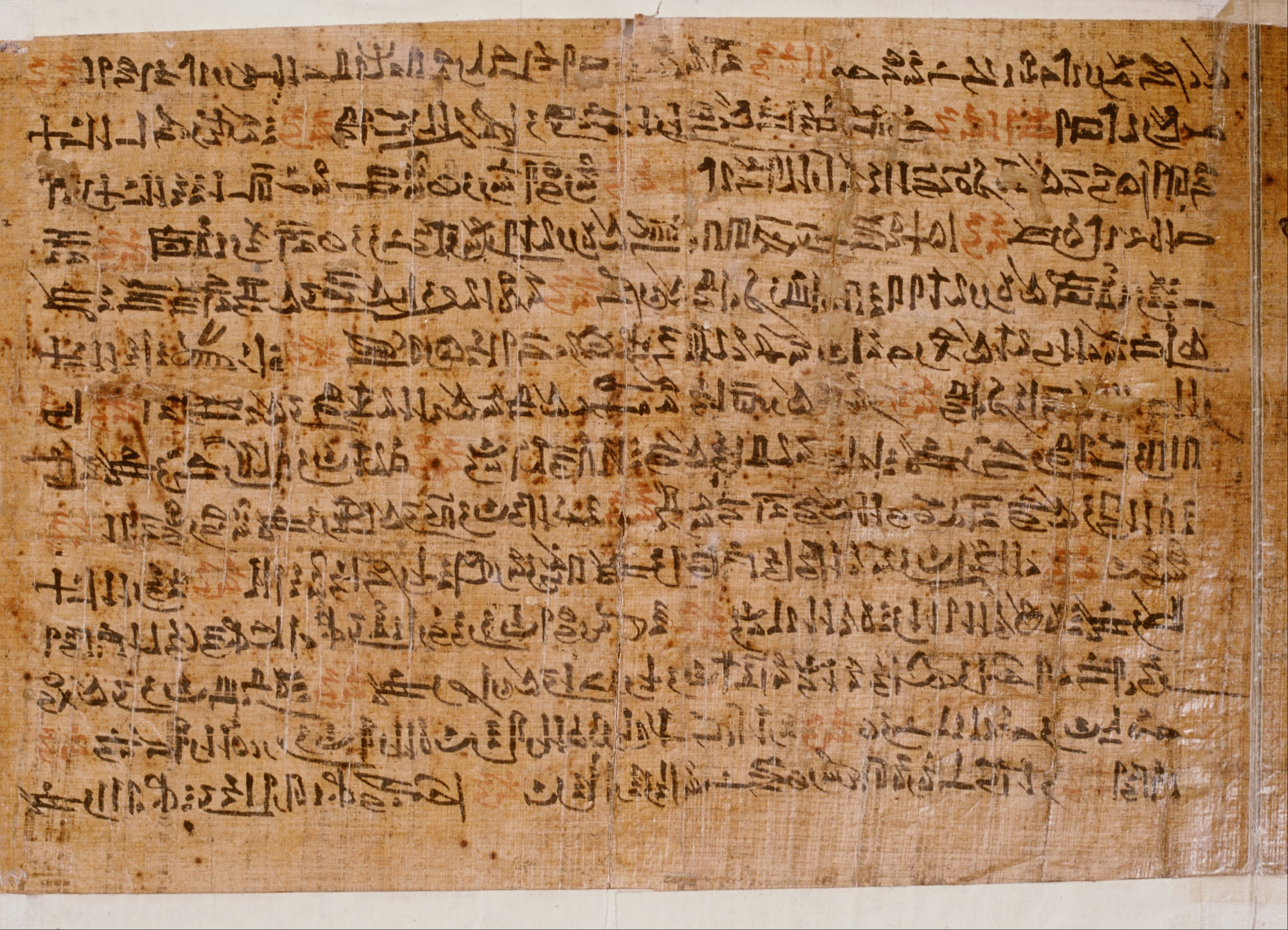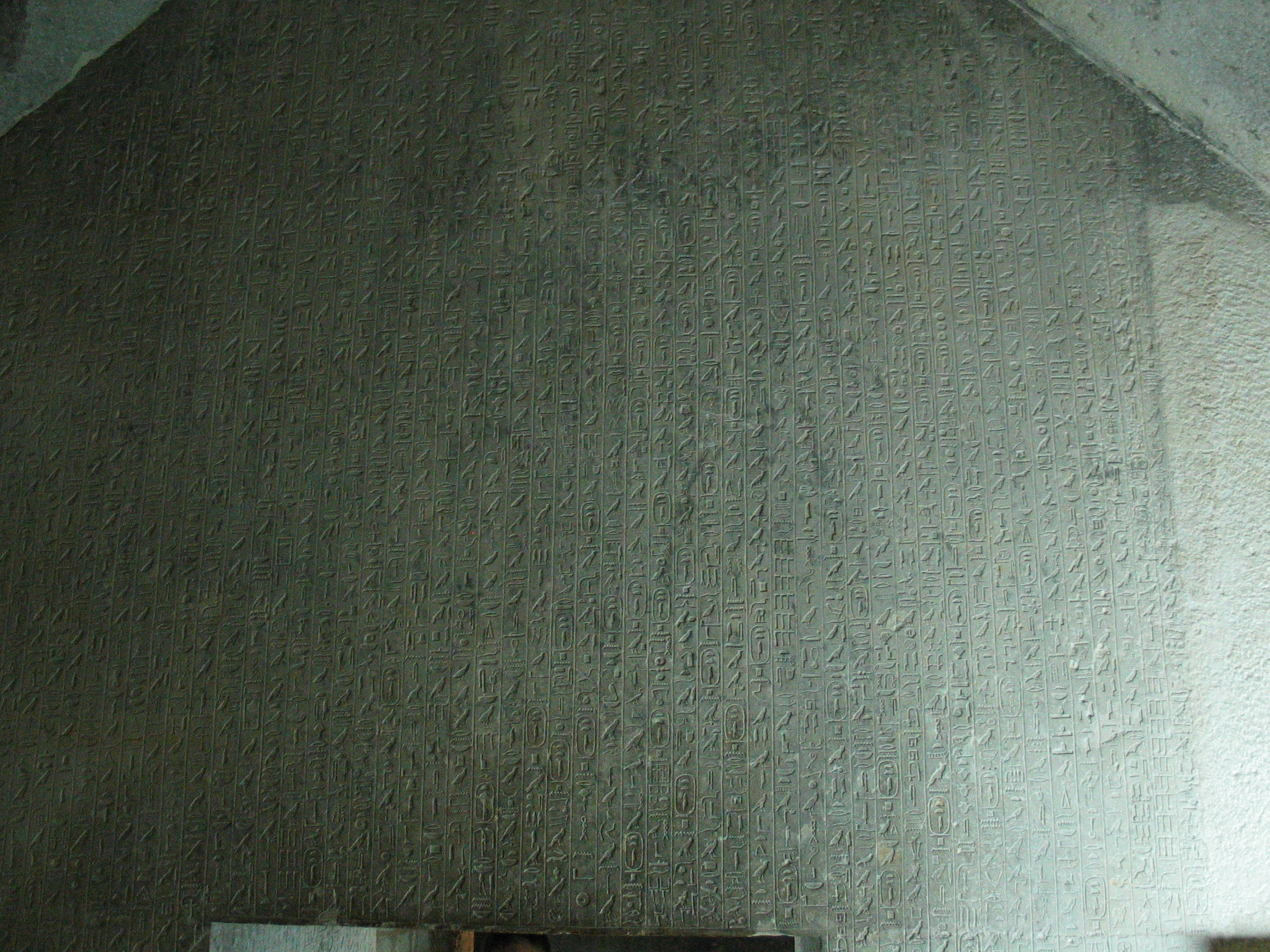|
Khentiamentiu
Khenti-Amentiu, also Khentiamentiu, Khenti-Amenti, Kenti-Amentiu and many other spellings, is an ancient Egyptian deity whose name was also used as a title for Osiris and Anubis. The name means " Foremost of the Westerners" or "Chief of the Westerners", where "Westerners" refers to the dead.Wilkinson, Richard H. ''The Complete Gods and Goddesses of Ancient Egypt''. pp. 119, 187. Thames & Hudson. 2003. Khenti-Amentiu was depicted as a jackal-headed deity at Abydos in Upper Egypt, who stood guard over the city of the dead. Khenti-Amentiu is attested early at Abydos, perhaps even earlier than the unification of Egypt at the start of the Early Dynastic Period (c. 3100–2686 BC). The name appears on the necropolis cylinder seals for the First Dynasty pharaohs Den and Qa'a, naming each of their predecessors with the title "Horus Khenti-Amentiu", starting with "Horus Khenti-Amentiu Narmer". A temple dating to predynastic times was also founded in Abydos for this god. Toby Wilk ... [...More Info...] [...Related Items...] OR: [Wikipedia] [Google] [Baidu] |
Abydos, Egypt
Abydos ( ar, أبيدوس, Abīdūs or ; Sahidic cop, Ⲉⲃⲱⲧ ') is one of the oldest cities of ancient Egypt, and also of the eighth nome in Upper Egypt. It is located about west of the Nile at latitude 26° 10' N, near the modern Egyptian towns of El Araba El Madfuna and El Balyana. In the ancient Egyptian language, the city was called Abdju (''ꜣbḏw'' or ''AbDw''). The English name ''Abydos'' comes from the Greek , a name borrowed by Greek geographers from the unrelated city of Abydos on the Hellespont. Considered one of the most important archaeological sites in Egypt, the sacred city of Abydos was the site of many ancient temples, including Umm el-Qa'ab, a royal necropolis where early pharaohs were entombed. These tombs began to be seen as extremely significant burials and in later times it became desirable to be buried in the area, leading to the growth of the town's importance as a cult site. Today, Abydos is notable for the memorial temple of Seti ... [...More Info...] [...Related Items...] OR: [Wikipedia] [Google] [Baidu] |
Ancient Egyptian Deity
Ancient Egyptian deities are the gods and goddesses worshipped in ancient Egypt. The beliefs and rituals surrounding these gods formed the core of ancient Egyptian religion, which emerged sometime in prehistory. Deities represented natural forces and phenomena, and the Egyptians supported and appeased them through offerings and rituals so that these forces would continue to function according to ''maat'', or divine order. After the founding of the Egyptian state around 3100 BC, the authority to perform these tasks was controlled by the pharaoh, who claimed to be the gods' representative and managed the temples where the rituals were carried out. The gods' complex characteristics were expressed in myths and in intricate relationships between deities: family ties, loose groups and hierarchies, and combinations of separate gods into one. Deities' diverse appearances in art—as animals, humans, objects, and combinations of different forms—also alluded, through symbolism, ... [...More Info...] [...Related Items...] OR: [Wikipedia] [Google] [Baidu] |
Ancient Egyptian Offering Formula
The offering formula, also known under transliterated forms of its incipit as the ''ḥtp-ḏỉ-nsw'' or ''ḥtp-ḏj-nswt'' formula was a conventional dedicatory formula found on ancient Egyptian funerary objects, believed to allow the deceased to partake in offerings presented to the major deities in the name of the king, or in offerings presented directly to the deceased by family members. It is among the most common of all Middle Egyptian texts. Its incipit ḥtp-ḏj-nswt "an offering given by the king" is followed by the name of a deity and a list of offerings given. The offering formula is usually found carved or painted onto funerary stelae, false doors, coffins, and sometimes other funerary objects. Each person had their own name and titles put into the formula. The offering formula was not a royal prerogative like some of the other religious texts such as the Litany of Re, and was used by anyone who could afford to have one made. Text All ancient Egyptian offering for ... [...More Info...] [...Related Items...] OR: [Wikipedia] [Google] [Baidu] |
Underworld Gods
The underworld, also known as the netherworld or hell, is the supernatural world of the dead in various religious traditions and myths, located below the world of the living. Chthonic is the technical adjective for things of the underworld. The concept of an underworld is found in almost every civilization and "may be as old as humanity itself". Common features of underworld myths are accounts of living people making journeys to the underworld, often for some heroic purpose. Other myths reinforce traditions that entrance of souls to the underworld requires a proper observation of ceremony, such as the ancient Greek story of the recently dead Patroclus haunting Achilles until his body could be properly buried for this purpose. Persons having social status were dressed and equipped in order to better navigate the underworld. A number of mythologies incorporate the concept of the soul of the deceased making its own journey to the underworld, with the dead needing to be taken a ... [...More Info...] [...Related Items...] OR: [Wikipedia] [Google] [Baidu] |
Egyptian Gods
Ancient Egyptian deities are the gods and goddesses worshipped in ancient Egypt. The beliefs and rituals surrounding these gods formed the core of ancient Egyptian religion, which emerged sometime in prehistory. Deities represented natural forces and phenomena, and the Egyptians supported and appeased them through offerings and rituals so that these forces would continue to function according to ''maat'', or divine order. After the founding of the Egyptian state around 3100 BC, the authority to perform these tasks was controlled by the pharaoh, who claimed to be the gods' representative and managed the temples where the rituals were carried out. The gods' complex characteristics were expressed in myths and in intricate relationships between deities: family ties, loose groups and hierarchies, and combinations of separate gods into one. Deities' diverse appearances in art—as animals, humans, objects, and combinations of different forms—also alluded, through symbolism ... [...More Info...] [...Related Items...] OR: [Wikipedia] [Google] [Baidu] |
Egyptian Death Gods
Egyptian describes something of, from, or related to Egypt. Egyptian or Egyptians may refer to: Nations and ethnic groups * Egyptians, a national group in North Africa ** Egyptian culture, a complex and stable culture with thousands of years of recorded history ** Egyptian cuisine, the local culinary traditions of Egypt * Egypt, the modern country in northeastern Africa ** Egyptian Arabic, the language spoken in contemporary Egypt ** A citizen of Egypt; see Demographics of Egypt * Ancient Egypt, a civilization from c. 3200 BC to 343 BC ** Ancient Egyptians, ethnic people of ancient Egypt ** Ancient Egyptian architecture, the architectural structure style ** Ancient Egyptian cuisine, the cuisine of ancient Egypt ** Egyptian language, the oldest known language of Egypt and a branch of the Afroasiatic language family * Copts, the ethnic Egyptian Christian minority ** Coptic language or Coptic Egyptian, the latest stage of the Egyptian language, spoken in Egypt until the 17th cent ... [...More Info...] [...Related Items...] OR: [Wikipedia] [Google] [Baidu] |
Amenti
The Duat ( egy, dwꜣt, Egyptological pronunciation "do-aht", cop, ⲧⲏ, also appearing as ''Tuat'', ''Tuaut'' or ''Akert'', ''Amenthes'', ''Amenti'', or ''Neter-khertet'') is the realm of the dead in ancient Egyptian mythology. It has been represented in hieroglyphs as a star-in-circle: 𓇽. The god Osiris was believed to be the lord of the underworld. He was the first mummy as depicted in the Osiris myth and he personified rebirth and life after death. The underworld was also the residence of various other gods along with Osiris. The geography of the ''Duat'' is similar in outline to the world the Egyptians knew: There are realistic features like rivers, islands, fields, lakes, mounds and caverns, but there were also fantastic lakes of fire, walls of iron, and trees of turquoise. In the ''Book of Two Ways'' (a Coffin Text) there is even a map-like image of the ''Duat''. Resident souls, gods, and demons The ''Duat'' was also a residence for various gods, including Osiri ... [...More Info...] [...Related Items...] OR: [Wikipedia] [Google] [Baidu] |
First Intermediate Period
The First Intermediate Period, described as a 'dark period' in ancient Egyptian history, spanned approximately 125 years, c. 2181–2055 BC, after the end of the Old Kingdom. It comprises the Seventh (although this is mostly considered spurious by Egyptologists), Eighth, Ninth, Tenth, and part of the Eleventh Dynasties. The concept of a "First Intermediate Period" was coined in 1926 by Egyptologists Georg Steindorff and Henri Frankfort. Very little monumental evidence survives from this period, especially from the beginning of the era. The First Intermediate Period was a dynamic time in which rule of Egypt was roughly equally divided between two competing power bases. One of the bases was at Heracleopolis in Lower Egypt, a city just south of the Faiyum region, and the other was at Thebes, in Upper Egypt. It is believed that during that time, temples were pillaged and violated, artwork was vandalized, and the statues of kings were broken or destroyed as a result of th ... [...More Info...] [...Related Items...] OR: [Wikipedia] [Google] [Baidu] |
Pyramid Texts
The Pyramid Texts are the oldest ancient Egyptian funerary texts, dating to the late Old Kingdom. They are the earliest known corpus of ancient Egyptian religious texts. Written in Old Egyptian, the pyramid texts were carved onto the subterranean walls and sarcophagi of pyramids at Saqqara from the end of the Fifth Dynasty, and throughout the Sixth Dynasty of the Old Kingdom, and into the Eighth Dynasty of the First Intermediate Period. The oldest of the texts have been dated to c. 2400–2300 BCE. Unlike the later Coffin Texts and Book of the Dead, the Pyramid Texts were reserved only for the pharaoh and were not illustrated. The use and occurrence of Pyramid Texts changed between the Old, Middle, and New Kingdoms of Ancient Egypt. During the Old Kingdom (2686 BCE – 2181 BCE), Pyramid Texts could be found in the pyramids of kings as well as three queens, named Wedjebten, Neith, and Iput. During the Middle Kingdom (2055 BCE – 1650 BCE), Pyramid Texts were not written ... [...More Info...] [...Related Items...] OR: [Wikipedia] [Google] [Baidu] |
Determinative
A determinative, also known as a taxogram or semagram, is an ideogram used to mark semantic categories of words in logographic scripts which helps to disambiguate interpretation. They have no direct counterpart in spoken language, though they may derive historically from glyphs for real words, and functionally they resemble classifiers in East Asian and sign languages. For example, Egyptian hieroglyphic determinatives include symbols for divinities, people, parts of the body, animals, plants, and books/abstract ideas, which helped in reading, but none of which were pronounced. Cuneiform In cuneiform texts of Sumerian, Akkadian and Hittite languages, many nouns are preceded or followed by a Sumerian word acting as a determinative; this specifies that the associated word belongs to a particular semantic group.Edzard, 2003 These determinatives were not pronounced. In transliterations of Sumerian, the determinatives are written in superscript in lower case. Whether a given sign ... [...More Info...] [...Related Items...] OR: [Wikipedia] [Google] [Baidu] |
Hieroglyph
A hieroglyph (Greek for "sacred carvings") was a character of the ancient Egyptian writing system. Logographic scripts that are pictographic in form in a way reminiscent of ancient Egyptian are also sometimes called "hieroglyphs". In Neoplatonism, especially during the Renaissance, a "hieroglyph" was an artistic representation of an esoteric idea, which Neoplatonists believed actual Egyptian hieroglyphs to be. The word ''hieroglyphics'' refers to a hieroglyphic script. The Egyptians invented the pictorial script, which refers to any writing system that employs images as symbols for various semantic entities, rather than the abstract signs used by alphabets. The appearance of these distinctive figures in 3000 BCE marked the beginning of Egyptian civilization. Though based on images, Egyptian script was more than a sophisticated form of picture-writing. Each picture/glyph served one of three functions: (1) to represent the image of a thing or action, (2) to stand for a sound or t ... [...More Info...] [...Related Items...] OR: [Wikipedia] [Google] [Baidu] |
Fifth Dynasty Of Egypt
The Fifth Dynasty of ancient Egypt (notated Dynasty V) is often combined with Dynasties III, IV and VI under the group title the Old Kingdom. The Fifth Dynasty pharaohs reigned for approximately 150 years, from the early 25th century BC until the mid 24th century BC. Chronology The Fifth Dynasty of Egypt is a group of nine kings ruling Egypt for approximately 150 years in the 25th and 24th centuries BC. The relative succession of kings is not entirely secured as there are contradictions between historical sources and archaeological evidence regarding the reign of the shadowy Shepseskare. Rulers Known rulers in the Fifth Dynasty are listed below. Manetho assigns 248 years of rule to the Fifth Dynasty; however, the pharaohs of this dynasty more probably ruled for approximately 150 years. This estimate varies by both scholar and source. The Horus names and most names of the queens are taken from Dodson and Hilton. Manetho writes that the Dynasty V kings ruled from Elep ... [...More Info...] [...Related Items...] OR: [Wikipedia] [Google] [Baidu] |
.jpg)







_-_046_(cropped).jpg)